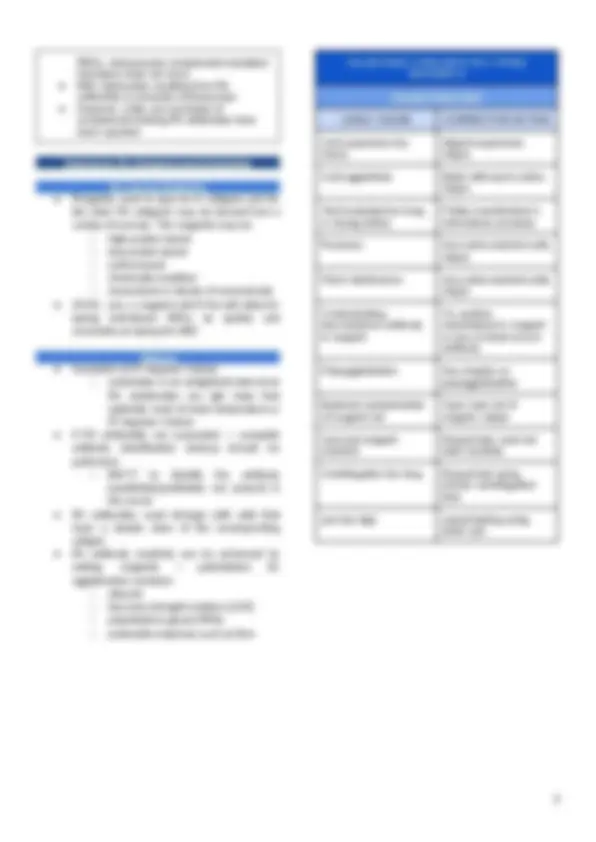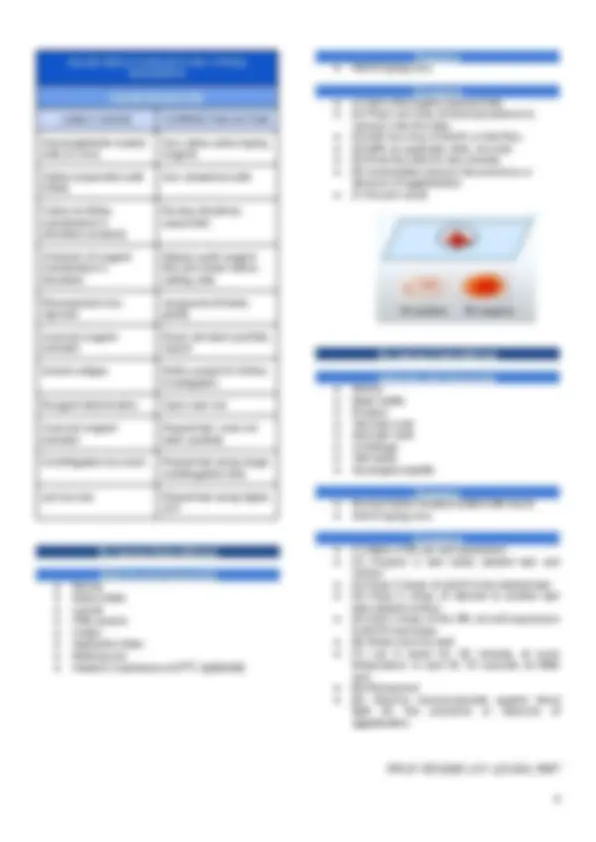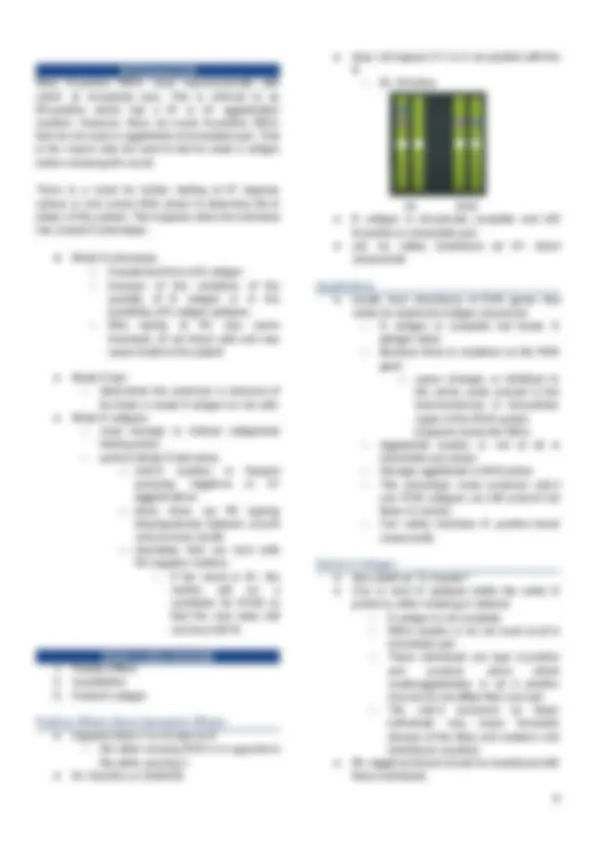





Study with the several resources on Docsity

Earn points by helping other students or get them with a premium plan


Prepare for your exams
Study with the several resources on Docsity

Earn points to download
Earn points by helping other students or get them with a premium plan
Community
Ask the community for help and clear up your study doubts
Discover the best universities in your country according to Docsity users
Free resources
Download our free guides on studying techniques, anxiety management strategies, and thesis advice from Docsity tutors
Rare and Extraordinary Rh Blood Grouping Biochemistry Set! Welcome to our exclusive offer, where we present you with an exceptional ImmunoHematology masterpiece that will captivate any enthusiast, scholar, or curious mind! Behold the fascinating world of Rh Antigens and their intricate biochemistry, now beautifully represented in this one-of-a-kind set. Step into the realm of non-glycosylated proteins, each one a marvel of scientific ingenuity. The RhCE antigen, the RhD, and the Rh-associated glycoprotein, all come together in this splendid collection. A striking visual representation awaits you, showcasing the intricate details and structural brilliance of these essential antigens.
Typology: Lecture notes
1 / 7

This page cannot be seen from the preview
Don't miss anything!




Rh Antigens Biochemistry ● Nonglycosylated proteins. ○ Means that there are no carbohydrates attached to the protein. ○ As you can see in the photo, this is the RhCE antigen, the RhD , and the Rh associated glycoprotein. ○ Among the three, only the RhAG antigen is glycosylated or has a carbohydrate attached to it. ● Transmembrane proteins. ● RHD and RHCE are remarkably similar ( 416 AA; traverse 12 times ) ○ Both are composed of 416 amino acids that traverse the cell membrane 12 times, same with RhD and RhAG. ● Differ by only 32 to 35 amino acids RhCE on the other hand, has this amino acid position: ● AA position 103: C or c expression ○ will determine if the antigen is an uppercase C antigen positive, or a lowercase c positive antigen ● AA position 226: E or e. ○ will determine if the antigen is an uppercase E positive or a lowercase e antigen positive. ● These antigens RhCE, RhD, and RhAG are exclusively seen in RBCs meaning they cannot be seen in other cells. ● Only small loops of Rh proteins are exposed on the surface of the RBC and provide the conformational requirements for many serological differences between the Rh blood types. ● As they are transmembrane it is not surprising they play a role in maintaining the structural integrity of red blood cells. ● Based on their structure, it appears they may be also transporters. ● Westhoff and colleagues showed they may have a role in transporting ammonia. An alternative hypothesis is that they may also be carbon dioxide transporters, so these antigens may have other functions. Antigen Characteristics ● Remember that, Rh antigens are proteins integral to the RBC membrane passing through the RBC wall 12 times ● Found only on RBCs , and are not soluble or expressed on other cells. ● The Rh antigens are well-developed at birth. ○ such can cause hemolytic disease of the the fetus and newborn or HDFN ● Immunogenic ○ exposure to foreign antigens through transfusion or pregnancy can cause an immune response to the production of corresponding antibodies. ● 5 common Rh antigens: D, C, E, c, e ○ their specific corresponding antibodies account for the majority of problems due to Rh antibodies ● The D antigen does not have an allele, but C and c are alleles, and E is allelic to e. D Antigen ● Rh antigens are highly Immunogenic ● Among the antigens, the D antigen is the most potent. ○ This is not surprising given that most Rh-negative individuals lack the entire
RhD protein. ● 85% is Rh-positive; 15% is Rh-negative ● However, the percentages vary among ethnicities. C, c, E, e ● D > c > E > C > e ● While the D antigen is the most immunogenic, the lowercase c antigen is the next most likely Rh antigen to elicit an immune response followed by E, C, and e. Meaning, the lowercase e is the least immunogenic of them all. ● It is not uncommon to see several Rh antibodies in a patient. ● C, c, E, and e antigens are inherited through the RHCE gene. ● The alleles are codominant. Rh Antibodies ● Fairly straightforward to detect and identify, as compared to understanding molecular genetics and biochemistry of the Rh blood group system. Antibody Characteristics ● Although the Rh system was first recognized by saline tests used to d etect IgM antibodies, most Rh antibodies are IgG immunoglobulins. ● IgG , react optimally at 37 ℃ or after antiglobulin testing in any method used for antibody detection. ● Alloimmunization - Rh antibodies are usually produced following exposure of the individual’s immune system to foreign RBCs through either transfusion or pregnancy. ● Rh antibodies persist in the circulation for years. ● Dosage : preferentially reacting with RBCs possessing double-dose Rh antigen. ○ Ex: anti-E may show 3+ with E+e- RBCs vs. 2+ with E+e+ RBCs. Antibody Subclasses ● IgG - IgG1, IgG2, IgG3, and IgG4 subclasses of Rh antibodies have been reported. ○ Among these four, IgG1 and IGg3 are of the greatest medical significance because the reticuloendothelial system (RES) rapidly clears RBCs coated with IgG1 and IGg3 from the circulation. ● IgA - Reported but are not routinely tested for in the blood bank. ● IgM - As with most blood group antibodies, these are formed initially, followed by a transition to IgG. ● An individual with low titer Rh antibody may experience an anamnestic or secondary antibody response if exposed to the same sensitizing antigen. Therefore, in a clinical setting, accuracy of d typing is essential, as is the careful checking of patient history to determine whether an Rh antibody has been identified previously. ● Most commonly found Rh antibodies are considered clinically significant; therefore, antigen-negative blood must be provided to any patient with a history of Rh antibody sensitization, whether the antibody is currently demonstrable or not. ● Rh antibodies do not bind complement ○ For complement to be fixed or the complement cascade activated two IgG immunoglobulins attach to RBC antigen in close proximity to each other EXPLANATION OF THE PICTURE ● The antigens (yellow-colored structures) that are in close proximity will react with two IgG globulins (red-colored structures) and the complement (blue-colored structures) will be fixed to its constant regions ● However, Rh antigens to which the antibody would attach are not suited on the RBC surface closely. ● Antigens are suited very far from each other. Therefore, the complement will not be able to bind to these two constant regions. Therefore, there would be no complement cascade activation ● Therefore, when an Rh antibody coats the
FALSE REACTIONS WITH Rh TYPING REAGENTS FALSE-NEGATIVES LIKELY CAUSE CORRECTIVE ACTION Immunoglobulin-coated cells (in vivo) Use saline-active typing reagent Saline-suspended cells (slide) Use unwashed cells Failure to follow manufacturer’s directions precisely Review directions; repeat test Omission of reagent manufacturer’s directions Always aadd reagent first and check before adding cells Resuspension too vigorous resuspend all tubes gently Incorrect reagent selected Read vial label carefully; repeat Variant antigen Refer sample for further investigation Reagent deterioration Open new vial Incorrect reagent selected Repeat test; read vial label carefully Centrifugation too short Repeat test using longer centrifugatioin time rpm too low Repeat test using higher rpm Rh Typing (Slide Method) Materials and Equipment ● Gloves ● Glass slides ● Lancet ● 70% alcohol ● Cotton ● Applicator sticks ● Marking pen
Reagents ● Anti-D typing sera Procedure ● (1) Get a thoroughly cleaned slide. ● (2) Place one drop of blood (peripheral or venous) onto the slide. ● (3) Add one drop of Anti-D or Anti-Rho. ● (4) With an applicator stick, mix well. ● (5) Rock the slide for two minutes. ● (6) Immediately observe the presence or absence of agglutination. ● (7) Record result. Rh Typing (Tube Method) Materials and Equipment ● Gloves ● Wash bottle ● Dropper ● Test tube rack ● Aspirator bulb ● Centrifuge ● Test tubes ● Serological pipette Reagents ● Normal Saline Solution (0.85-0.9% NaCl) ● Anti-D typing sera Procedure ● (1) Make a 3% red cell suspension. ● (2) Prepare 2 test tubes labeled test and control. ● (3) Place 2 drops of anti-D to the labeled test. ● (4) Place 2 drops of albumin to another test tube labeled control. ● (5) Add 2 drops of the 3% red cell suspension to BOTH test tubes. ● (6) Shake and mix well. ● (7) Let it stand for 20 minutes at room temperature or spin for 15 seconds at 3400 rpm. ● (8) Resuspend. ● (9) Observe macroscopically against direct light for the presence or absence of agglutination.
Most D-positive RBCs react macroscopically with anti-D at immediate spin. This is referred to as Rh-positive which has a 3+ or 4+ agglutination reaction. However, there are some D-positive RBCs that do not react or agglutinate at immediate spin. That is the reason why we need to test for weak d antigen before releasing the result. There is a need for further testing at 37 degrees celsius or end or/and AHG phase to determine the D status of the patient. This happens when the individual has a weak D phenotype.
○ because of the variations of the quantity of D antigen or in the specificity of D antigen epitopes. ○ Miss typing of Rh may cause hemolysis of red blood cells and may cause death to the patient ● Weak D test ○ determines the presence or absence of Du factor or weak D antigen on red cells ● Weak D antigens ○ react strongly in indirect antiglobulin testing phase ○ perform Weak D test when: → Anti-D reaction in forward grouping: negative or 2+ agglutination → when there are Rh typing discrepancies between current and previous results → neonates that are born with Rh-negative mothers ○ if the result is D+, the mother will be a candidate for RHIG so that the next baby will not have HDFN WEAK D MECHANISMS
Du^ Manner of Reporting Additional Comment 0 Du^ negative Rh (-) Du^ (-): Negative reaction confirms that the person is Rh negative (patient or donor) + Du^ positive Rh (-) Du^ (+) should be given proper classification: a. if patient: Rh negative b. if donor: Rh positive [+] with agglutination; [0] no agglutination NOTE: If the reaction is positive for Du test, the person or patient should be given proper designation. If this individual is accidentally given a Rh positive (with complete D antigen) blood component, he may develop an antibody, and this should be avoided. REMEMBER: Du positive individuals are classified as Rh positive when they donate blood and Rh negative when they receive blood. GOALS FOR WEAK D TESTING ● To improve accuracy in Rh typing ● Conserve Rh negative units (given to those who need them) ● Prevent unnecessary administration of Rh immune globulin in weak D stereotypes Exercise 12: Testing for Weak D Antigen Materials/Equipment ● Wasserman tubes ● Marking pen ● Centrifuge ● Pasteur pipettes ● Test tube rack ● Gum label ● Gloves ● Nescofilm Reagents/Sample ● Anticoagulated BLOOD SAMPLES ● Anti-D ● Antihuman globulin sera ● Normal saline solution in a wash bottle ● 22% bovine serum albumin Procedure